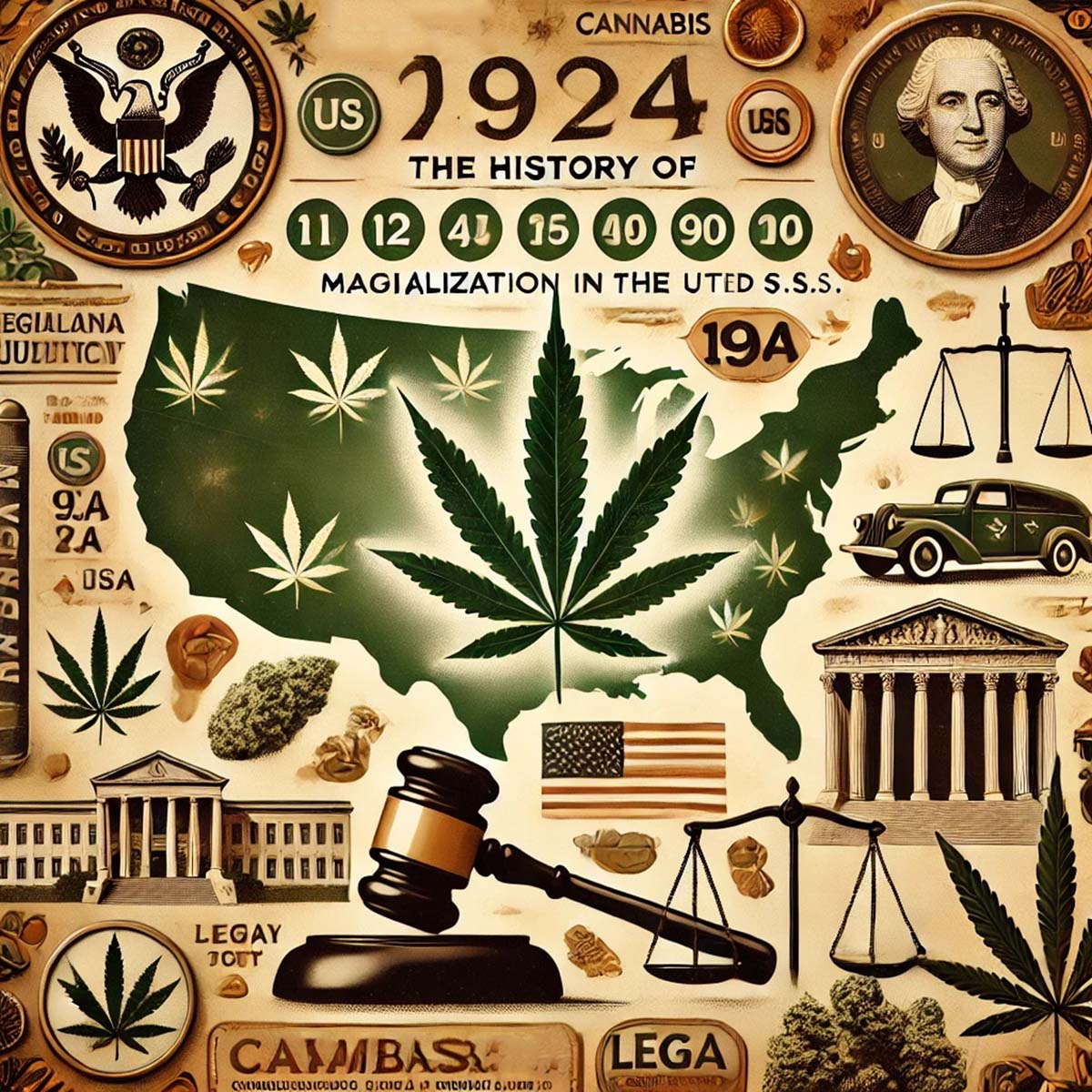The journey towards marijuana legalization in the United States is a complex and intriguing tale that intertwines politics, culture, and shifting societal attitudes. Over the past century, the legal status of marijuana has undergone significant changes, from widespread prohibition to the current patchwork of state-by-state legalization. Let’s delve into the history of marijuana legalization in the U.S., tracing the roots of cannabis prohibition, the push for reform, and the evolving landscape of cannabis laws.
Early History: Cannabis as a Common Crop
Cannabis has deep historical roots in the United States. It was one of the first crops cultivated by early settlers for its versatile uses, primarily as hemp. Hemp was used to make textiles, paper, and rope, and several Founding Fathers, including George Washington and Thomas Jefferson, grew hemp on their plantations.
The Shift Towards Prohibition
The turn of the 20th century saw the beginnings of a cultural and legislative shift against cannabis. This transformation was driven by a combination of factors, including anti-immigrant sentiments, racial bias, and political motivations.
- Racial Bias: The term “marijuana” was popularized to associate the plant with Mexican immigrants, creating a scapegoat for social problems. Racial bias played a significant role in the demonization of cannabis.
- Marihuana Tax Act of 1937: This act imposed strict regulations and taxes on the sale and cultivation of cannabis, effectively making it illegal. This marked the beginning of widespread prohibition.
The War on Drugs and Strict Legislation
The “War on Drugs,” declared by President Richard Nixon in the 1970s, escalated the federal government’s stance on cannabis. This era led to the implementation of strict drug policies, mandatory minimum sentences, and the infamous “three strikes” laws. Cannabis remained classified as a Schedule I controlled substance alongside drugs like heroin, with no recognized medical value.
The Emergence of Medical Cannabis
Despite the federal crackdown on cannabis, the latter part of the 20th century saw the emergence of a movement advocating for the plant’s medicinal potential. California led the way in 1996 by legalizing medical cannabis through Proposition 215, a significant turning point in the fight for cannabis reform. This step prompted other states to follow suit, leading to the establishment of medical cannabis programs across the nation.
Recreational Cannabis and Changing Attitudes
In 2012, Colorado and Washington made history by becoming the first states to legalize recreational cannabis for adults. This move set the stage for a cascade of other states legalizing recreational use. The revenue generated from the cannabis industry became a compelling motivation for further legalization.
Federal Changes and Ongoing Reform
While cannabis remains illegal at the federal level, attitudes have gradually shifted. The 2018 Farm Bill legalized industrial hemp, and in 2020, the House of Representatives passed the MORE Act (Marijuana Opportunity Reinvestment and Expungement Act), which aimed to decriminalize and deschedule cannabis. Although the Senate has yet to pass the bill, these efforts reflect a growing recognition of the need for cannabis reform.
A Shifting Legal Landscape
The history of marijuana legalization in the United States is a story of changing times and evolving societal perceptions. As the conversation around cannabis reform continues, the nation finds itself at a crossroads, seeking to reconcile federal laws with the growing demand for legal access to a plant that has a complex and storied history in the United States. Whether the future brings full federal legalization or further state-level reform, the journey towards a more inclusive and sensible approach to cannabis laws remains an ongoing and captivating one.



